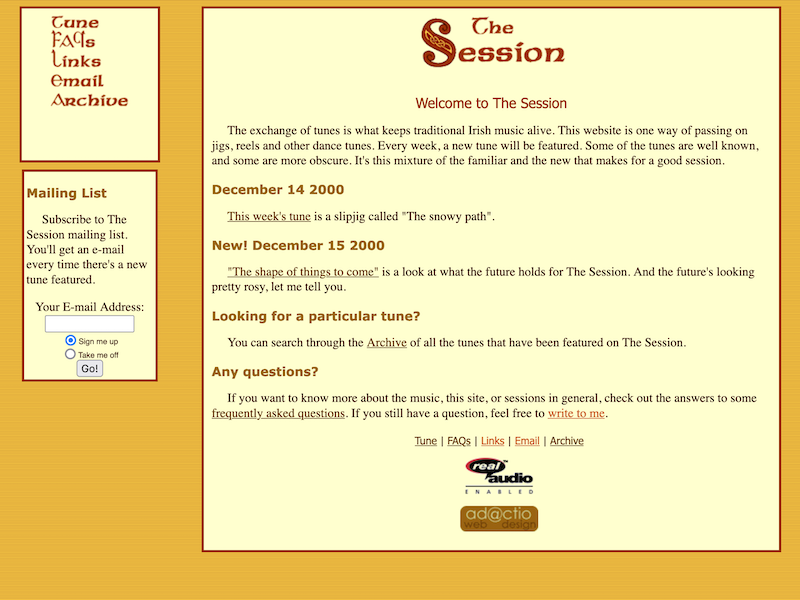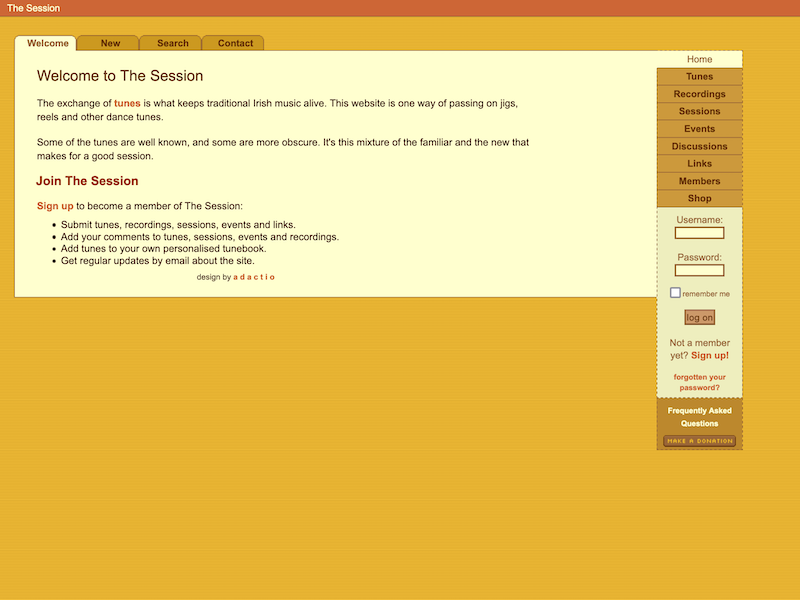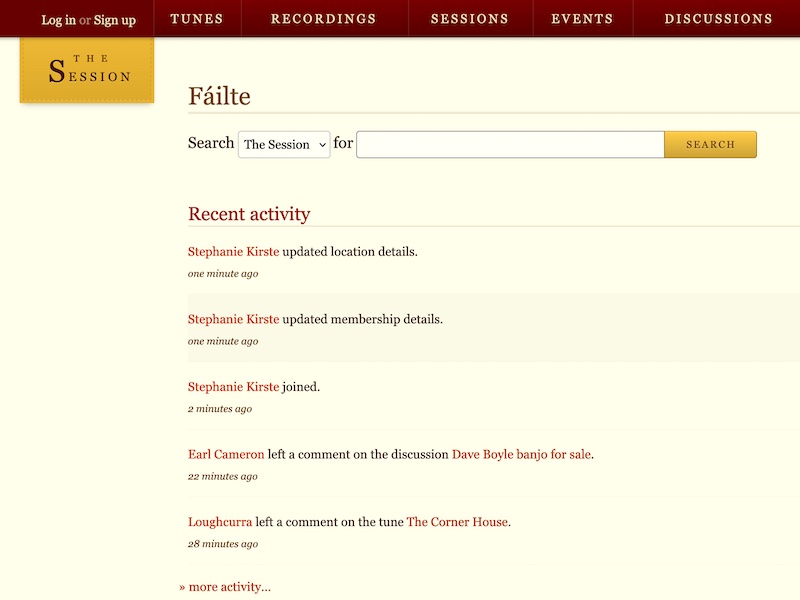Two decades of thesession.org
On June 3rd, 2001, I launched thesession.org. Happy twentieth birthday to The Session!
Although actually The Session predates its domain name by a few years. It originally launched as a subdirectory here on adactio.com with the unwieldly URL /session/session.shtml
That incarnation was more like a blog. I’d post the sheetmusic for a tune every week with a little bit of commentary. That worked fine until I started to run out of tunes. That’s when I made the site dynamic. People could sign up to become members of The Session. Then they could also post tunes and add comments.
That’s the version that is two decades old today.
The last really big change to the site happened in 2012. As well as a complete redesign, I introduced lots of new functionality.
In all of those incarnations, the layout was fluid …long before responsive design swept the web. That was quite unusual twenty years ago, but I knew it was the webby thing to do.
What’s also unusual is just keeping a website going for twenty years. Keeping a community website going for twenty years is practically unheard of. I’m very proud of The Session. Although, really, I’m just the caretaker. The site would literally be nothing without all the contributions that people have made.
I’ve more or less adopted a Wikipedia model for contributions. Some things, like tune settings, can only be edited by the person who submitted it But other things, like the track listing of a recording, or the details of a session, can be edited by any member of the site. And of course anyone can add a comment to any listing. There’s a certain amount of risk to that, but after testing it for two decades, it’s working out very nicely.
What’s really nice is when I get to meet my fellow members of The Session in meatspace. If I’m travelling somewhere and there’s a local session happening, I always get a warm welcome. I mean, presumably everyone would get a warm welcome at those sessions, but I’ve also had my fair share of free pints thanks to The Session.
I feel a great sense of responsibility with The Session. But it’s not a weight of responsibility—the way that many open source maintainers describe how their unpaid labour feels. The sense of responsibility I feel drives me. It gives me a sense of purpose.
The Session is older than any client work I’ve ever done. It’s older than any books I’ve written. It’s even older than Clearleft by a few years. Heck, it’s even older than this blog (just).
I’m 50 years old now. The Session is 20 years old. That’s quite a chunk of my life. I think it’s fair to say that it’s part of me now. Of all the things I’ve made so far in my life, The Session is the one I’m proudest of.
I’m looking forward to stewarding the site through the next twenty years.














